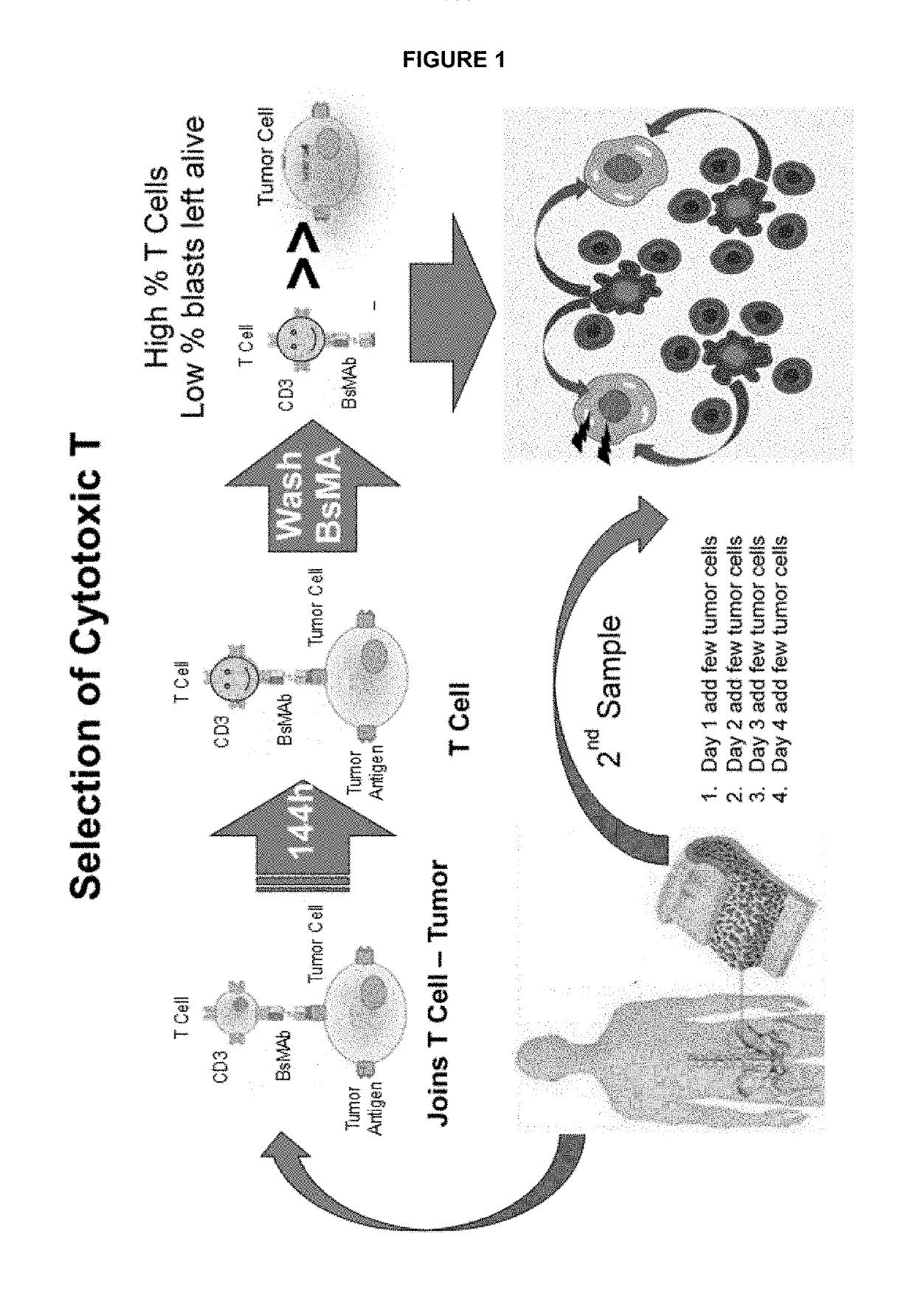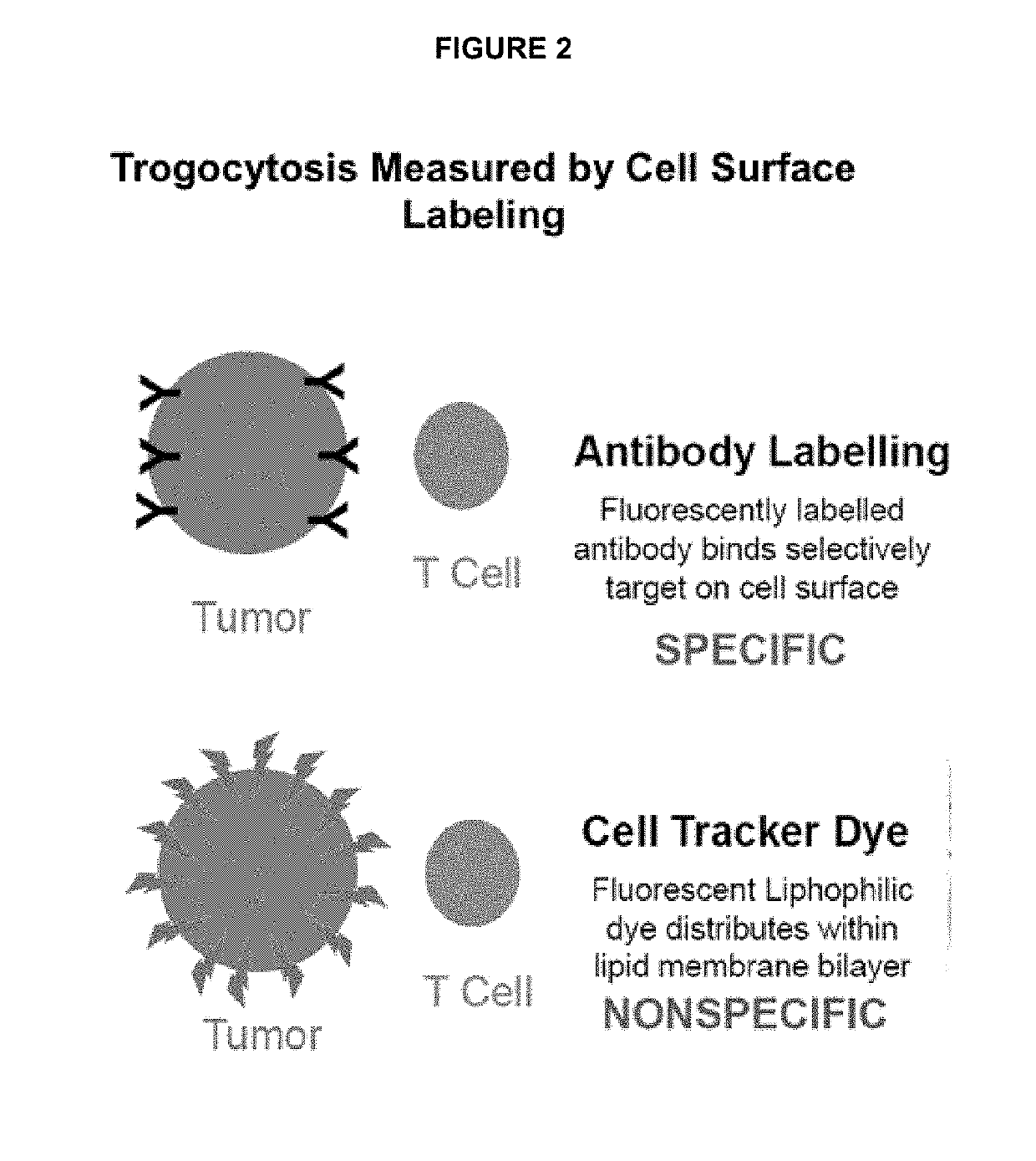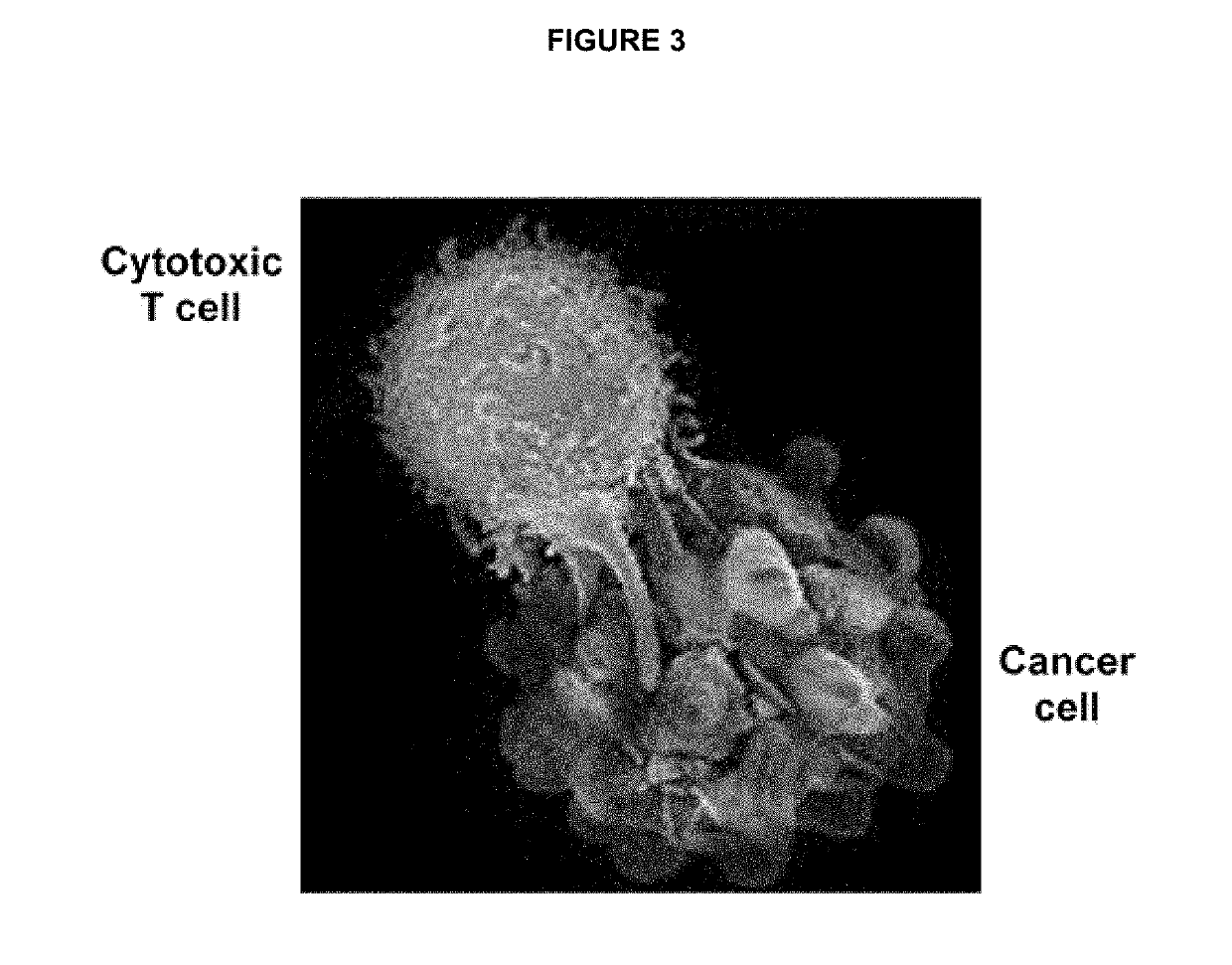Ex vivo bite-activated t cells
a technology of t cells and bites, applied in the field of ex vivo biteactivated t cells, to achieve the effects of reducing toxicity, increasing cancer cell killing activity, and reducing off-target effects
- Summary
- Abstract
- Description
- Claims
- Application Information
AI Technical Summary
Benefits of technology
Problems solved by technology
Method used
Image
Examples
example 1
Bispecific Antibodies in Multiple Myeloma (MM)
[0663]In embodiments, samples obtained from patients with hematological malignancies are useful for testing the effect of a BsMAb to a specific tumor target on malignant cells and a T cell target (CD3) on CTLs, as such samples contain both the target (malignant) cells and the effector (CTLs) cells. Bone marrow (BM) samples were obtained from patients who had been diagnosed with multiple myeloma. All samples were from adult patients, over 18 years of age, who gave informed consent for study participation.
[0664]Bispecific monoclonal antibodies (BsMAb) and control antibodies were added to 96-well plates. Each BM sample was diluted with culture media, in its entirety (i.e., without first separating cells or other components from the BM), and plated into the 96-well plates comprised of wells containing either the BsMAb, control antibodies, or neither, with all conditions tested in duplicate. Samples were incubated for 96 hours to promote the ...
example 2
BsMAbs on Target and Effector Cells in Chronic Lymphoid Leukemia (CLL)
[0666]In this example, the effect of BsMAbs on target and effector cells was tested in a different indication and a different sample type than those tested in Example 1. Peripheral blood (PB) samples from patients who have been diagnosed with CLL were used. All samples were from adult patients, over 18 years of age, who gave informed consent for study participation.
[0667]A BsMAb that targets CD19 on malignant cells and CD3 on CTLs as well as control antibodies were added to 96-well plates. Each PB sample was diluted with culture media, in its entirety (i.e., without first separating cells or other components from the PB), and plated into the 96-well plates comprised of wells containing either the BsMAb, control antibodies, or neither, with all conditions tested in duplicate. Samples were incubated for 144 hours to promote the proliferation of the CTLs in the sample. Just prior to analysis, the red cells were lysed...
example 3
BsMAbs on Target and Effector Cells in Acute Myeloid Leukemia (AML)
[0669]In this example, the effect of BsMAbs on target and effector cells was tested in a different indication than those of Examples 1 and 2. Bone marrow (BM) samples were obtained from patients who had been diagnosed with AML. All samples were from adult patients, over 18 years of age, who gave informed consent for study participation.
[0670]The BsMAb that targets CD123 on malignant cell and CD3 on the T cell population, as well as control antibodies, were added to 96-well plates. Each BM sample was diluted with culture media, in its entirety (i.e., without first separating cells or other components from the BM), and plated into the 96-well plates comprised of wells containing either the BsMAb, control antibodies, or neither, with all conditions tested in duplicate. Samples were incubated for 120 hours to promote the proliferation of the CTLs in the sample. Just prior to analysis, the red cells were lysed, and antibo...
PUM
| Property | Measurement | Unit |
|---|---|---|
| time | aaaaa | aaaaa |
| time | aaaaa | aaaaa |
| time | aaaaa | aaaaa |
Abstract
Description
Claims
Application Information
 Login to View More
Login to View More - R&D
- Intellectual Property
- Life Sciences
- Materials
- Tech Scout
- Unparalleled Data Quality
- Higher Quality Content
- 60% Fewer Hallucinations
Browse by: Latest US Patents, China's latest patents, Technical Efficacy Thesaurus, Application Domain, Technology Topic, Popular Technical Reports.
© 2025 PatSnap. All rights reserved.Legal|Privacy policy|Modern Slavery Act Transparency Statement|Sitemap|About US| Contact US: help@patsnap.com



